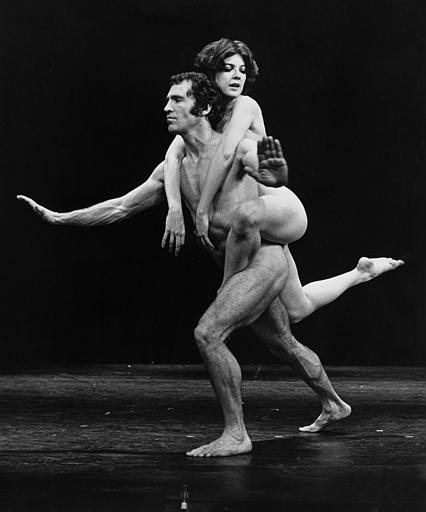According to the Supreme Court, nude dancing — when performed before an audience with the purpose of conveying feelings of eroticism to spectators — qualifies as a form of expressive conduct that triggers First Amendment review.
Court has said that nude dancing has First Amendment implications
The Court first hinted that nude dancing might be entitled to First Amendment protection in California v. LaRue (1972). In this case, the Court upheld the power of state government officials to regulate the sale of alcoholic beverages at bars offering nude dancing, but Justice William H. Rehnquist’s opinion for the Court observed that “at least some of the performances to which these regulations address themselves are within the limits of the constitutional protection of freedom of expression.”
Three years later, in Doran v. Salem Inn (1975), the Court again alluded to constitutional protection for nude dancing. Rehnquist wrote, “Although the customary ‘barroom’ type of nude dancing may involve only the barest minimum of protected expression, … this form of entertainment might be entitled to First and Fourteenth Amendment protection under some circumstances.”
In Schad v. Mount Ephraim (1981), the Court struck down a local ordinance banning all live entertainment in a New Jersey borough. The operators of an adult bookstore that offered nude dancers in booths for patron viewing successfully challenged the ordinance. Justice Byron R. White wrote for the Court that “nude dancing is not without its First Amendment protections from official regulation.”
The Supreme Court next confronted the issue of nude dancing and the First Amendment in Barnes v. Glen Theatre, Inc. (1991), in which two clubs and individual dancers employed by the clubs objected to the application of an Indiana public indecency law prohibiting public nudity.
The law required that the dancers wear G-strings and pasties, which the dancers argued detracted from their erotic messages. The Court upheld the law by a 5-4 vote, but the five justices split across three different opinions. Eight of the nine justices agreed that nude dancing has First Amendment implications.
Chief Justice Rehnquist described nude dancing as “expressive conduct within the outer perimeters of the First Amendment, though we view it as only marginally so.”
Joined by Justices Sandra Day O’Connor and Anthony M. Kennedy, Rehnquist also determined that the requirement of G-strings and pasties was a “minimal restriction … [that] leaves ample capacity to convey the dancer’s erotic message.”
The plurality justified the Indiana law as a valid way for the state to target the “evil” of public nudity.
Souter mentions ‘secondary effects’
Justice David H. Souter asserted in his concurrence that the state could ban public nudity because of the government’s interest in combating the harmful secondary effects associated with adult businesses, such as increased crime and decreased property values.
Justice Antonin Scalia contended that the law did not trigger First Amendment review as it was a law of general application targeting public nudity.
In dissent, Justice White — joined by three other justices — contended that the state law targeted exotic dancing because legislators wished to “protect the viewers from what the State believes is the harmful message that nude dancing communicates” — an impermissible reason to censor expression.
In City of Erie v. Pap’s A.M. (2000), a six-member majority upheld a Pennsylvania ordinance banning public nudity, including totally nude dancing at clubs. In line with Barnes, however, the justices reiterated that municipalities cannot ban semi-nude, non-obscene dancing.
The Court, in an opinion by Justice O’Connor, justified the Pennsylvania law based on the secondary effects doctrine: “The State’s interest in preventing harmful secondary effects is not related to the suppression of expression,” she wrote. “In trying to control the secondary effects of nude dancing, the ordinance seeks to deter crime and the other deleterious effects caused by the presence of such an establishment in the neighborhood.”
Justice Souter — who had advanced the secondary-effects rationale in Barnes — dissented in Pap’s A.M., explaining that he had erred in not requiring the government to advance greater evidence of secondary effects.
“After many subsequent occasions to think further about the needs of the First Amendment, I have come to believe that a government must toe the mark more carefully than I first insisted,” Souter wrote. “I hope it is enlightenment on my part, and acceptable even if a little late.”
Municipalities continue to impose licensing, zoning, and other regulatory measures upon businesses that offer nude dancing; secondary effects are the primary justification.
Some measures include patron-performer buffer zones that regulate the distance between the dancer and customer, restricted hours of operation, and restrictions on the movements made by the dancers during their performances.
Most courts have upheld the buffer zone and operation requirements but have invalidated restrictions that seek to regulate the content of the dances, as in Schultz v. City of Cumberland (7th Cir. 2000).

